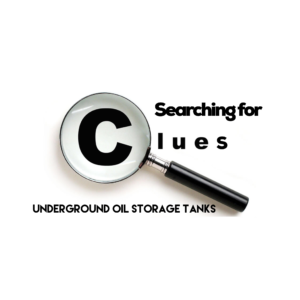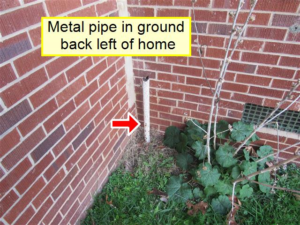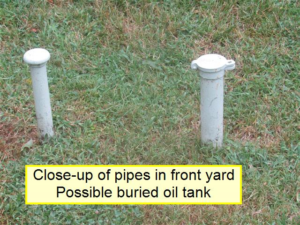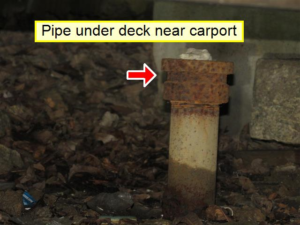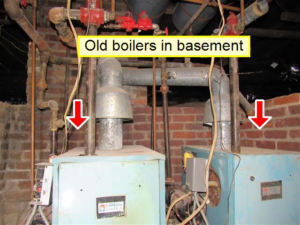Searching for Clues: Underground Oil Storage Tanks
Do you know that today’s kids still watch Scooby Do0? I remember watching the animated who-done-it show when I was a kid. It featured a quartet of teenage amateur detectives and their loyal, talking dog, Scooby-Doo, solving mysteries during each episode. One of the catchphrases the protagonist, Fred Jones (I bet you didn’t know he had a last name), would say every episode was, “Hey gang! Let’s split up and look for clues!” Today’s post comes under Fred’s divide-and-conquer, clue searching spirit. Here’s some signs or clues to whether you think you might have an underground oil storage tank under your home.
If you are thinking of purchasing or are currently living in a home built before the mid 1960’s it may have an underground storage tank. Many homes built before the mid 1960’s used oil as a fuel to heat. Some homes had above ground storage tanks, but many used underground storage tanks (UST’s). Many home owners don’t know that they have an underground storage tank since the tank may not be visible. The main problem with UST’s is corrosion and leaks. The tanks were primarily made of steel which corrodes over time. On average, steel tanks develop holes and leaks between 20 or 30 years. Most of the tanks installed in the 60’s or before are now more than 50 years old, so leaks are a high probability. This leads to oil leaching into the ground, which then can contaminate ground and well water.
How will you know if there is an underground oil tank on the property? Typically, you will see fill and vent pipes sticking out of the ground. They may be a distance from the home or could be right next to the home at the foundation (see photos below).
If this is not the case, you can investigate the basement or crawl space of your home. Look for old pipes that were used to supply oil to the furnace or an old furnace itself that may be abandoned in the crawl space or basement. During a recent home inspection, I found old oil furnaces that were abandoned in the basement and no longer in use. The oil tank was later located buried under a deck (see photos below).
Sometimes the previous owners may have cut the fill and vent pipes flush with the ground because they were unsightly. You may have to look for uneven depressions or humps in the ground where a tank could be buried. If you are still suspicious of an area, and no fill cap or depressions can be located, you may want to rent a metal detector to try and locate the tank.
Typical signs of an oil spill or leak from an UST include stains on the soil which present as a greenish gray color, petroleum odors, puddles of oil on the soil or dead vegetation around the suspected area. All these signs can occur if water has entered a UST, because oil is lighter than water and will float on the top until the oil exits the tank through the fill or vent pipe.
Hopefully, this was beneficial to you as you solve the mystery of whether or not there’s an underground oil storage tank below your home. It’s important to determine if a home has an underground storage tank. The removal of underground storage tanks can be expensive, especially if they have leaked. Also, they can be an environmental hazard. If the tanks are no longer in use, they should either be removed or filled. Both options should be performed by contractors that specialize in UST’s. For more information, please visit the NC Department of Environmental Quality (NCDEQ) https://deq.nc.gov/about/divisions/waste-management/ust

